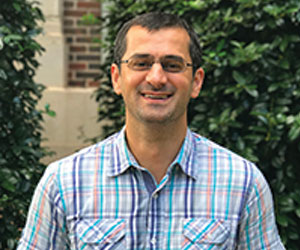Why Pursue a ESL Teaching Master's Degree
The TESL degree is internationally recognized as the terminal degree in the field of Teaching English as a Second Language. Learn from faculty who have extensive teaching experience in K-12 and adult education contexts in the United States, Latin America, Asia, and Europe.
UTSA’s creative and talented instructors possess expertise in the courses they teach and are internationally recognized scholars who maintain active research agendas in the field. When students join the TESL program at UTSA, they become part of a network of current, former, and future K-12 teachers and adult educators from the United States and around the world.
See What Our Students Say
When you choose UTSA, you join a community of talented students being taught by award-winning faculty. See what our students have to say.
Admission & Application Requirements
Applications are submitted through the UTSA Graduate Application. Please upload all required documents (listed below) on your UTSA Graduate Application. It is the applicant’s responsibility to ensure completion and submission of the application, a nonrefundable application fee, and all required supporting documents are on file with UTSA by the appropriate application deadline.
| Teaching English as a Second Language (MA) | ||
|---|---|---|
| Required Degree | Bachelor's Degree from an accredited college or university in the United States or have proof of equivalent training at a foreign institution. | |
| Minimum GPA | 3.0 (on a 4.0 scale) Departments may consider GPA of last 60 semester credit hours | |
| Coursework | 18 credit hours in an area related to this graduate degree and at least 12 hours must be at the upper-division level. | |
| Transcripts* | Required from all institutions attended; international transcripts must be recorded/translated to English | |
| Credential Evaluation | Required if you have earned university-level credit from foreign institutions. Submit an evaluation of your transcripts from Educational Credential Evaluators (ECE) directly from the graduate admission application platform | |
| English Language Proficiency | 587 TOEFL Paper / 84 TOEFL Internet / 7.0 IELTS / Duolingo 130 | |
| *Unofficial transcripts will be taken into consideration for admissions; however, if admitted into the program, you must submit official transcripts to the University. | ||
Application Deadlines
Applicants are encouraged to have their admission file completed as early as possible. All applications, required documents and letters of recommendation, if applicable, must be submitted by 5:00 PM U.S. Central Time on the day of the deadline. Deadlines are subject to change.
| Teaching English as a Second Language (MA) | |||
|---|---|---|---|
| Timing on Admission Decision: Completed applications will be reviewed for admission on a rolling basis. Decisions generally will be made and sent to applicants within 4 to 6 weeks of receiving the application. | |||
| Application Deadlines for: | Priority | International | Domestic |
| Fall 2024 | d-none | June 1 | August 1 |
| Spring 2025 | d-none | October 1 | December 1 |
| Summer 2025 | d-none | October 1 | December 1 |
| d-none | d-none | d-none | d-none |
| d-none | d-none | d-none | d-none |
| d-none | d-none | d-none | d-none |
Funding Opportunities
ResourcesCareer Options
UTSA prepares you for future careers that are in demand. The possible careers below is data pulled by a third-party tool called Emsi, which pulls information from sources like the U.S. Bureau of Labor Statistics, U.S. Census Bureau, online job postings, other government databases and more to give you regional and national career outlook related to this academic program.
Courses are offered in the evenings (6:00 PM to 8:45 PM) to fit the schedules of working professionals. Daytime courses are available in the summer.
This program is housed on the UTSA Main Campus, but coursework takes place at both the Downtown and Main Campuses.
- Computer assisted second language acquisition
- Impact of U.S. federal and state language and education policies on language minority students.
- International language policy
- Linguistic landscapes
- Language maintenance, shift, and loss
- Effective policies and programs for language minority students
- Heritage language education
- Language contact and Language Variation



